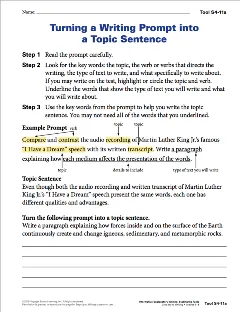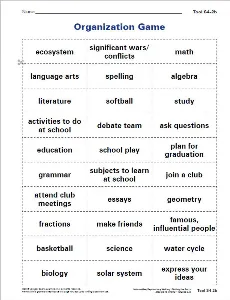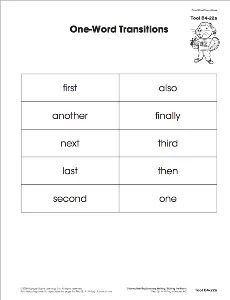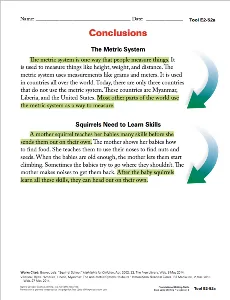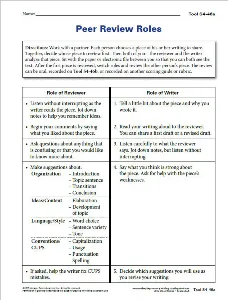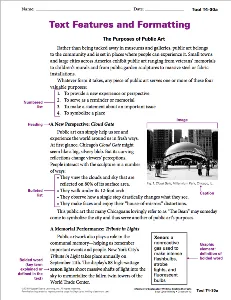Below are six strategy activities to support K–12 writers. Follow these easy steps to help students apply these strategies for effective writing:
- Step 1: Watch the introduction and model lesson for the strategy activity.
- Step 2: Download the student pages by clicking the blue Strategy button.
- Step 3: Choose the appropriate grade level. You will notice student pages are listed by grade band: K–2, 3–5, 6–8, and 9–12.
- Step 4: Use the materials by printing or downloading in a virtual environment for instruction.
- Step 5: Let the writing begin!
Note: You can practice these strategies for writing about any informational text students read.
1. Identify and Order Key Ideas
It’s never too early to teach students how to categorize and sort ideas. After some time, students learn the importance of distinguishing key ideas from details and organizing ideas logically.
Download activities to teach organization in fun, age-appropriate ways for students at all grade levels, K–12.
2. Turn a Writing Prompt into a Topic Sentence
Whether a topic is assigned or selected by the student, writers need to understand that developing a topic requires careful thinking about the purpose and audience. The result is a topic sentence that is precise as well as interesting.
Watch the video to see how to teach students in grades 6–8 to use key words from a prompt when writing a topic sentence for an informative/explanatory writing assignment or test. Download the accompanying activity tools for students in grades K–12.
3. Connect Ideas with Transitions
Transitions help readers follow the development of the topic by showing relationships between ideas. The process of selecting the right transition words helps students clarify their own thinking about how their ideas are related.
Watch the video to learn how to teach transitions in meaningful sets to students in grades K–2 so they can connect key ideas to organize their writing and make it easy to understand. Download the accompanying activity tools for students in grades K–12.
4. Write Successful Conclusions
To write a successful conclusion, students need to tie back to the topic statement and also give readers food for thought.
Watch the video to learn tips for teaching students in grades 3–5 to identify conclusions and tie writing back to the topic without adding any new information to the informative/explanatory assignment. Download the accompanying activity tools for students in grades K–12.
5. Improve Writing with Revision
Revision is often hard for writers at any skill level. Using these tools can help students focus on aspects of their work and the work of peers that need improvement.
Watch the video to learn how to teach students in grades 6–8 to help each other revise and improve writing by participating in constructive peer-review interactions in the roles of reviewer and writer. Download the accompanying activity tools for students in grades K–12.
6. Add Text Features and Graphics
Adding drawings, charts, and pictures can make any writing topic more understandable and enjoyable. Understanding differences between types of graphics like charts, figures, diagrams, timelines, and maps is important—as is knowing where to locate them, where to place them in writing, and how to properly cite sources.
Watch the video to learn how to teach students in grades 9–12 to utilize graphics effectively to visually convey and clarify complex ideas and aid readers’ comprehension. Download the accompanying activity tools for students in grades K–12.
Each of these tips, tools, and videos are part of Step Up to Writing®, systematic writing instruction designed for learners of all levels and types, from kindergarten through 12th grade. Step Up to Writing breaks writing skills into steps that provide variation and differentiation based on student needs. Help your students meet rigorous standards and become proficient and confident writers.

